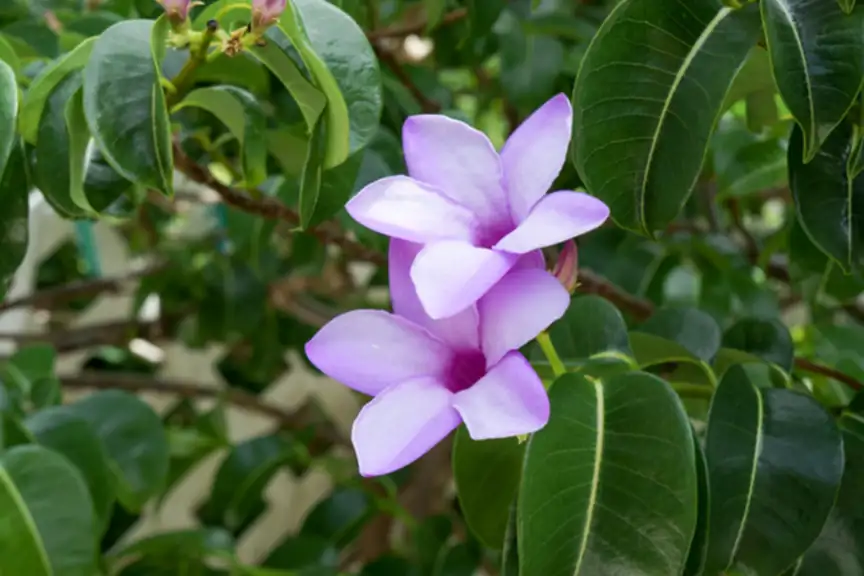Rubber Vine Control in Your Garden
Cryptostegia grandiflora

Cryptostegia grandiflora

Rubber Vine is a Weed of National Significance, therefore, all reasonable efforts must be taken to control the weed. To help control Rubber Vine, use Yates Tree & Blackberry Killer. For seedlings up to 5cm diameter, apply Yates Tree & Blackberry Killer as a basal bark spray. For treatment of suckers and seedlings more than 5cm in basal diameter, apply Yates Tree & Blackberry Killer as a cut stump treatment.
Monitor treated areas regularly, paying attention to areas near waterways, like creeks or gullies and treat as required.
For severe infestations, fire and/or other mechanical means such as slashing or blade ploughing may be necessary. Consult your local council or Department of Primary Industries for more information.
Also known as purple allamanda, Rubber Vine is a robust woody climber that rapidly grows and spreads. Due to its invasive nature, it is considered a Weed of National Significance. It was first introduced to Australia as an ornamental shrub in the late 1800s. Many admired its lush verdant growth and its ability to thrive under harsh conditions, but it soon spread and naturalised. As it's native to Madagascar, it thrives in subtropical and tropical climates; consequently, it is widespread it many parts of northern and central Queensland.
Rubber Vine is a vigorous multi-stemmed vine that can scramble high up into canopies or grow into dense shrub-like thickets 1-2m when unsupported. The leaves are glossy and leathery with a red-purple midvein and dull undersides. Its trumpet-shaped pale pink to white flowers appear sporadically throughout the year, if sufficient moisture is available, and are followed by 10-12cm long rigid pods.
The pods grow in pairs at the end of a short stalk and can contain between 300-800 seeds. Approximately 200 days after appearing, the pods dry, split and release hundreds of seeds. The seeds are flat with a tuft of long silky white hairs on one end, which allow them to be easily dispersed via wind, water, animals, and machinery. Up to 95 percent of the seeds are viable and can persist in the soil for 6-8 months. Seeds germinate when there is sufficient soil moisture – usually after a rain event or if they are near a waterway. Rubber Vine can typically be found growing near or along waterways, however, it's quite adaptable and can also be found growing in other soil types, provided there is ample rainfall.
The stems, leaves, and seed pods exude a milky white sap when broken or cut and can cause skin irritations. All parts of the plant are poisonous. Livestock rarely graze on Rubber Vine, but deaths can occur when feed is scarce.
Rubber Vine can smother and destroy native vegetation, decrease biodiversity, severely impact waterways and grazing areas, and provide a habitat for feral animals. As such, it's critical to identify and control as soon as it is noticed.